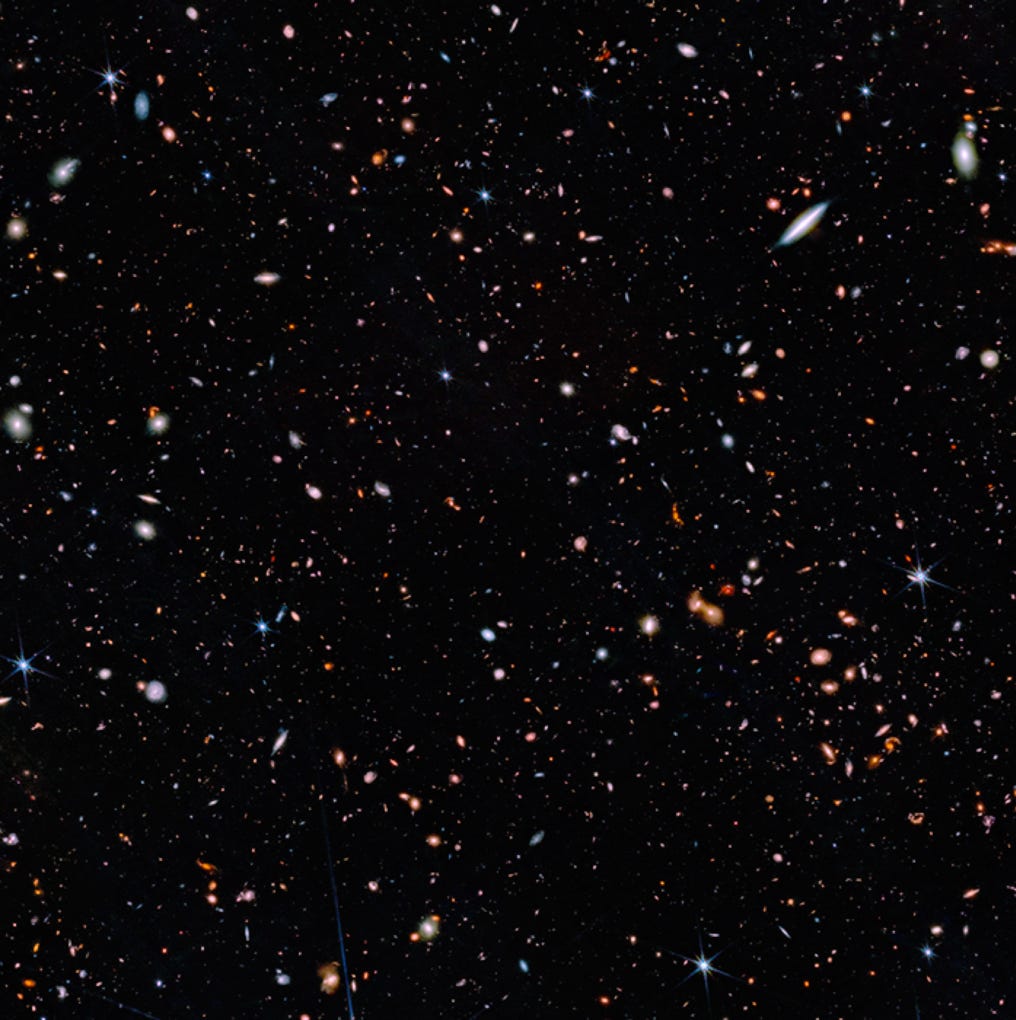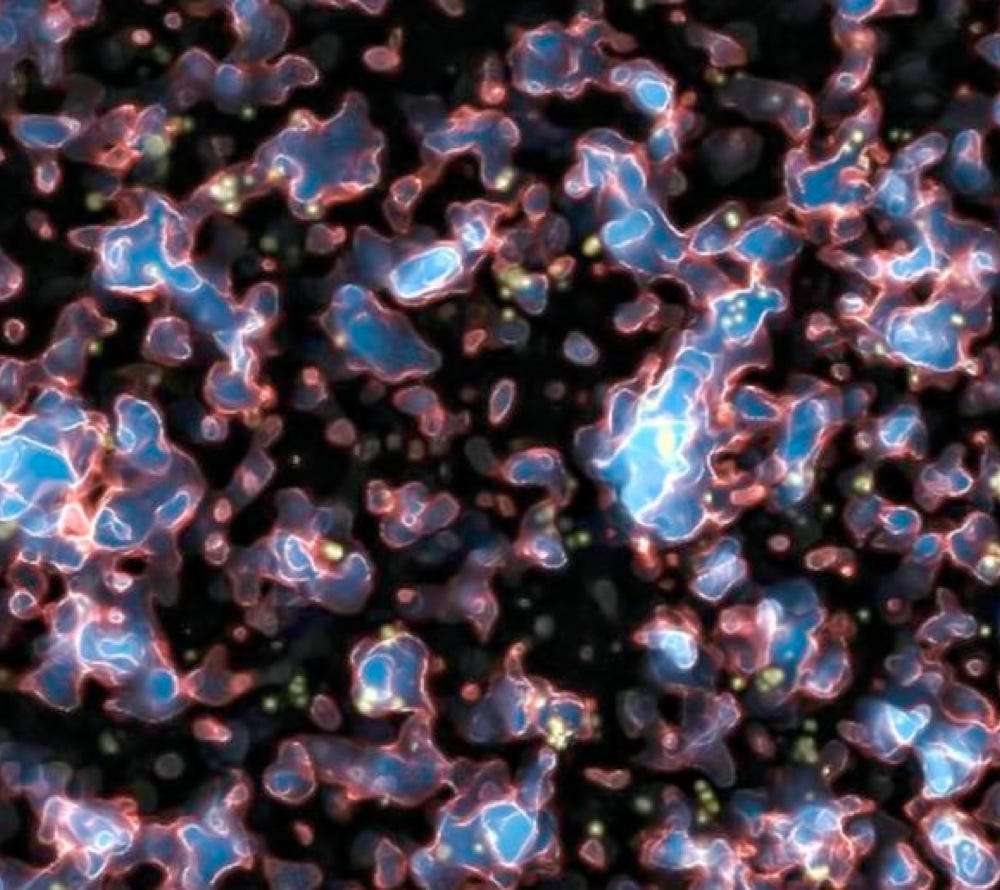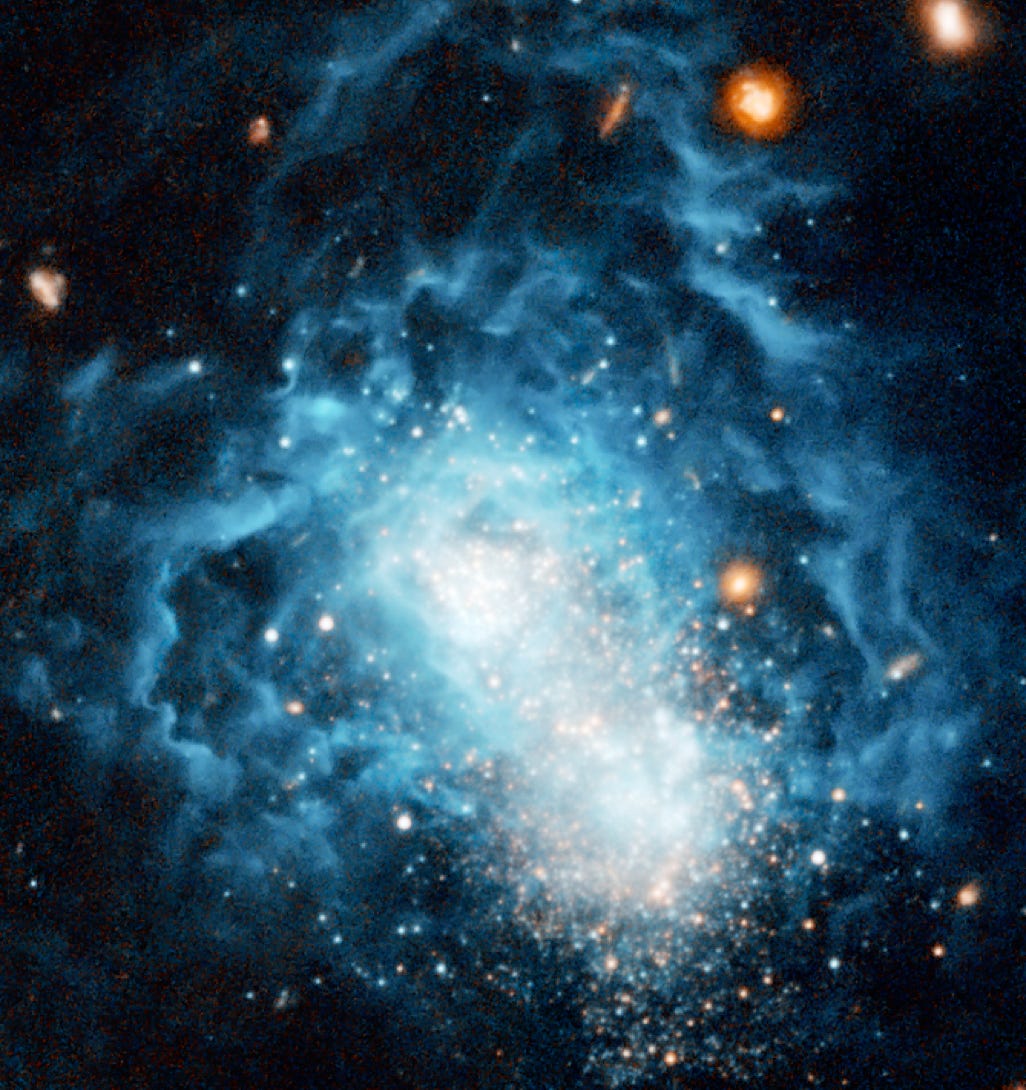First galaxies and black holes. In the last few years, the observational frontier has been pushed back to several hundred million years after the Big Bang, providing our first glimpse of build-up of the first galaxies in the early universe. This work has been made possible by the sensitive instrumentation on JWST, but other observational facilities across the electromagnetic spectrum are now contributing greatly to our understanding of the first generations of stars, galaxies, and black holes.
My research group is actively investigating early galaxies with JWST, Keck, VLT, and ALMA. Work is underway to obtain a census of star formation within the first billion years and to measure the properties of the first generations of galaxies that JWST is now uncovering. Recent efforts have also focused on the study of active galactic nuclei at early epochs. With these observations, we seek to understand the physics that regulates the growth of galaxies and supermassive black holes throughout the first billion years. Example projects led by current and recent group members are listed below.
- UV luminosity function at z~9-14 (Whitler+24b)
- Star formation histories (Whitler+23, Endsley+23, Endsley+24)
- UV continuum slopes (Topping+22b, Topping+24a)
- Star forming main sequence (Topping+22a)
- Morphology and structure at z>6 (Chen+23)
- Gas-phase chemistry, nitrogen enhancement, and globular cluster formation (Tang+23, Topping+24b, Topping+25, Senchyna+24)
- Narrow line AGN at z>6 and UV properties of Little Red Dots (Tang+25)
- Obscured AGN in massive z~7 Galaxies (Endsley+23)

Image credit: NASA, ESA, CSA, B. Robertson, B. Johnson, S. Tacchella, M. Rieke, D. Eisenstein, A. Pagan
Reionization. The first luminous sources can also be studied by their impact on matter in the intergalactic medium (IGM). Several hundred thousand years after the Big Bang, the universe cooled sufficiently for stable hydrogen atoms to form. Roughly one billion years later, the gas in the IGM appears is found to be highly ionized. The reionization of hydrogen is thought to be linked to the emergence of stars and galaxies. By studying when and how reionization occurs, we learn about the nature of the first generations of galactic systems.
The luminous stars that form in the first galaxies begin to ionize hydrogen in the surrounding IGM, creating ionized bubble-like structures in the matter distribution. My research group uses spectrographs on large telescopes (JWST, Keck, MMT, Magellan) to study reionization, both characterizing when and how reionization happened and identifying the nature of the sources that were responsible for the transition. Recent example projects led by research group members are listed below.
- Evolution of Ly𝛼 EW and escape fraction + reionization timeline (Tang+24c, Chen+24)
- Mapping ionized bubbles over wide areas (Endsley+22)
- Connecting overdensities and ionized bubbles with JWST (Tang+23, Whitler+24a, Chen+25)
- Improvement of Ly𝛼 as probe of reionization (Endsley+22c, Tang+24a, Tang+24b)

Image credit: M. Alvarez, R. Kaehler, and T. Abel
Metal poor massive stars. The first stars form from chemically-pristine gas, containing only the light nuclei forged during Big Bang nucleosynthesis. The nature of the first stars has long remained unclear, with many suggesting that metal-free stars (the so-called Population III) should be considerably more massive than typical stars formed from chemically-enriched gas. As metals are forged and mixed into the interstellar medium of galaxies, the Population III phase will end. But much remains unknown about the nature of the low metallicity massive star populations that form in dense clusters of the first generations of galaxies.
My research group studies the massive star populations formed in low metallicity environments found both in nearby galaxies and in the early universe. At low redshift (z<0.01), we have led a series of multi-wavelength programs targeting the lowest metallicity star forming galaxies known. We have developed color selections to identify the most metal poor galaxies in imaging surveys. At high redshift, ultra-deep UV spectroscopy is now beginning to provide direct and indirect measurements of the massive stars that form in dense star clusters at early epochs.
- UV emission line properties of metal poor galaxies (Senchyna+17, Senchyna+19a, Tang+21)
- Photometric searches for the most metal poor galaxies (Senchyna+19b)
- High mass X-ray binary populations in metal poor galaxies (Senchyna+20)
- Direct measurements of stellar populations formed at low metallicity (Senchyna+21, Senchyna+22, Topping+24b, Topping+25, Senchyna+24)

Image credit: HST, NASA, ESA